Culinary school / Colorno
Toque of the town
Want to become the next great Italian chef? Then head to a palace in northern Italy that’s training the next generation of star cooks.
“Italian cooking, together with French, Japanese and Arab cooking, is one of the fountainhead cultures of cuisine,” says Matteo Berti, director of Alma cookery school’s curriculum, as the scent of simmering onions wafts through the kitchen classroom where he sits in a pristine white tunic. “Every chef needs to understand Italian cooking – it’s the foundation of so many dishes and philosophies.”
Berti’s statement is grand but fitting for the setting. He’s sat inside the grandiose, golden-hued Ducal Palace of Colorno – the so-called “Versailles” of the Duchy of Parma – which was built in the 17th and 18th centuries as a 400-room royal estate. Today its Renaissance-style topiary garden, cobbled inner courtyards and fading frescoed passageways house a rarefied school that counts some of Italy’s top chefs among its alumni. The school’s mission? To pass on the country’s rich patrimony of cookery and abundant range of ingredients.
The Alma school, founded in 2004, has taken over most of the palace as it is today. The rooms where aristocrats were once entertained are now white-walled kitchens lined with stainless-steel cabinets, appliances, pans and skillets.
The school launched with a class of just 17 but in a few short years has become perhaps the most prestigious place in the world to study Italian cuisine: it is training chefs from more than 60 different countries during five months of immersive lessons followed by a five-month internship at a top Italian kitchen. Upon completion, nine in 10 graduates are employed in their field, either launching their own venture or taking to the top ranks of restaurants around the world.
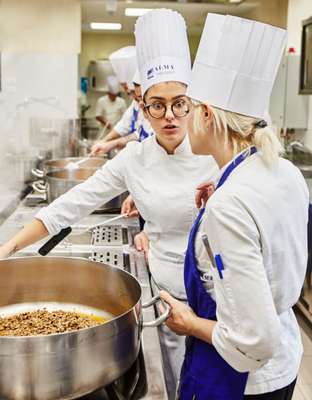
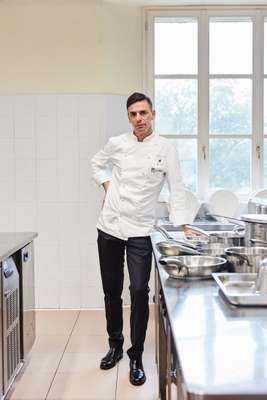
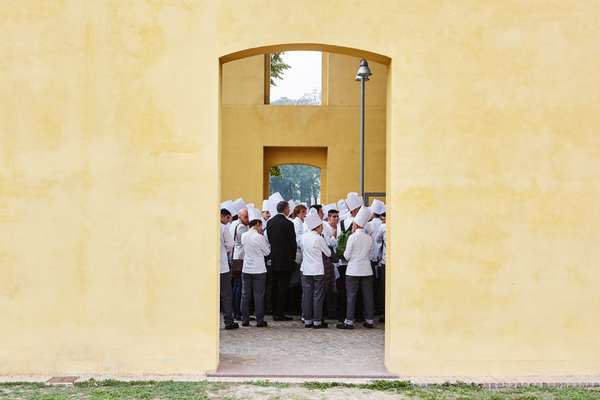
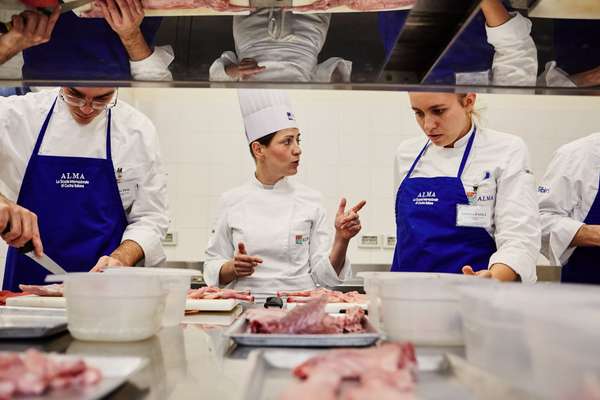

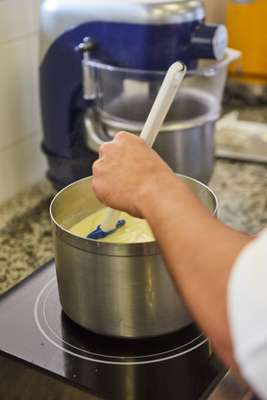
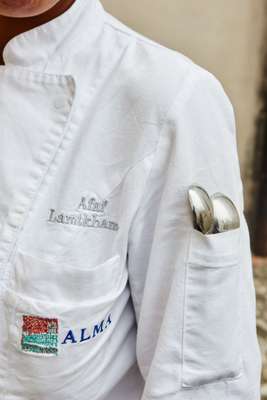
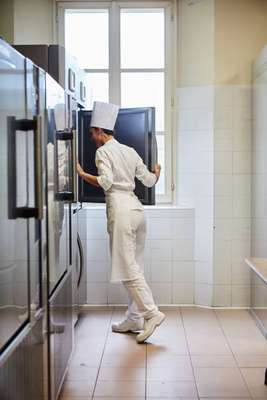
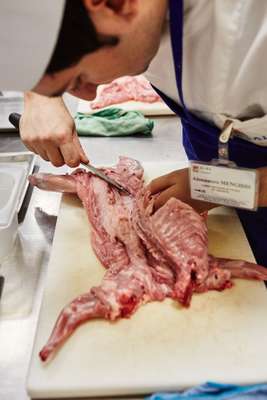
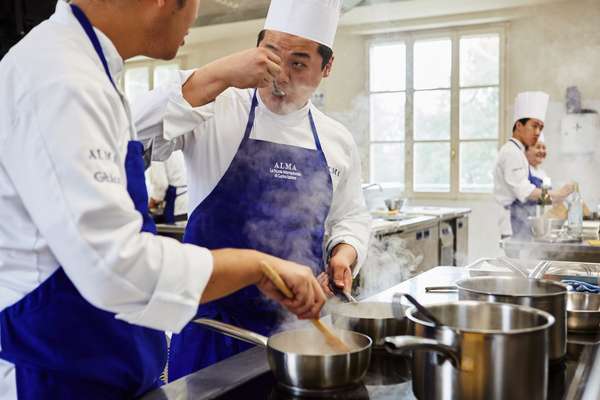
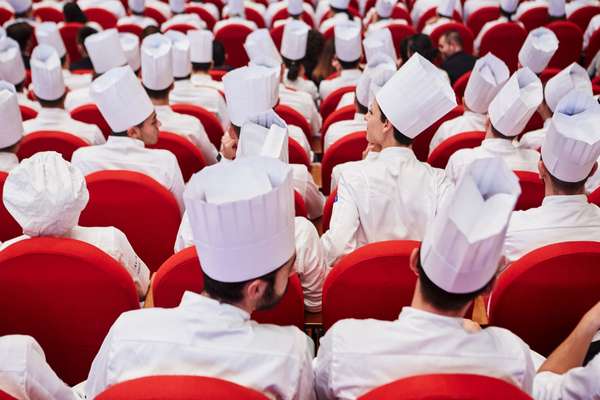
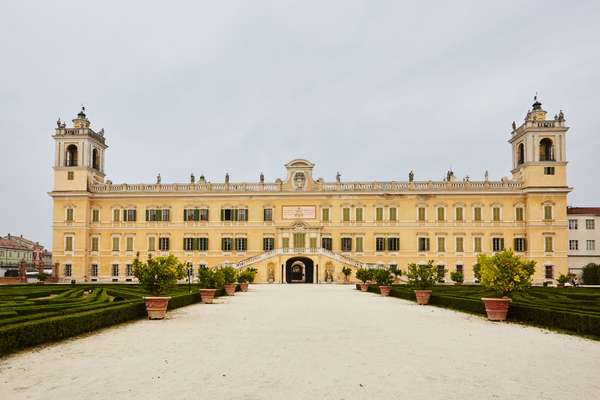
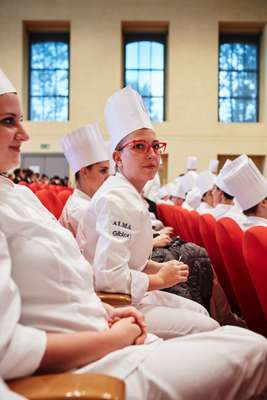
In keeping with Alma’s emphasis on swift immersion in the craft and traditions of cookery, students are dressed in chef’s whites and toques from day one and thrown into honing their preparation techniques. They are also encouraged to eat well. Trips to some of the country’s finest restaurants are complemented with visits from chefs from throughout Italy: usually bearing local products for the students to taste and acquaint themselves with. There are expeditions to visit producers too, where the young chefs learn how to prepare ingredients. Recently they found out how different ricotta made from Sicilian sheep’s milk tastes when served fresh from the farm.
“Travel is an ever-bigger part of our curriculum,” says Berti, who believes his students will work harder to source their own ingredients in the professional world if they’ve been properly introduced to and enamoured by them at the school. “If not for the products, you could do this course by Skype,” he says, flashing a grin.
At the heart of the school is a slightly haughty restaurant where minimal dark-wood chairs surround thick, white cloth-clad tables. It’s here that the students put their new skills to the test by serving as many as 40 guests at a time in restaurant conditions.
On the opening day of the academic year Paolo Lopriore, chef and owner of Il Portico near Lake Como, prepares the semester’s first meal. He’s a board member here and also teaches twice a week. He trained with Gualtiero Marchesi, a celebrated architect of modern Italian cookery and the first non-French chef to earn three Michelin stars; he also served as Alma’s dean until he died last year.
As one of the star teachers at the school (which collaborates with chefs including Carlo Cracco, Enrico Crippa and Davide Oldani), Lopriore feels duty-bound to “simplify the problems of starting out in the kitchen”, as he puts it. “For today’s chefs, cooking is more about thinking than physical labour – there’s more technology in the kitchen, restaurants have fewer tables – but you still have to create something impressive to get noticed.” As he speaks he’s stood facing the rows of neatly clipped hedges spanning the palace garden. “I just want to teach our students that our work is still manual. It’s not about painting plates, it’s about exalting the flavours.”
Student profiles
Caterina Geppi
Age: 19
Hometown: Biella
Goal: “I just finished high school and I want to do something for other people.”
Roberto Ghezzi
Age: 23
Hometown: Bologna
Goal: “I worked as a head chef in Toronto but I came back to study so I can move up into a top-notch Italian kitchen.”
Filippo Gemignani
Age: 25
Hometown: Viareggio
Goal: “I studied viticulture and oenology but I’m ready to start cooking on cruise ships.”
Alma International School of Italian Cuisine
Location: Ducal Palace of Colorno, near Parma
Student body: 1,200 per year
Advanced course cost: €16,400
Advanced course duration: 5 months on site, 5 months placement
Modules include: Italian cuisine; pastry-making; sommelier training; restaurant management


